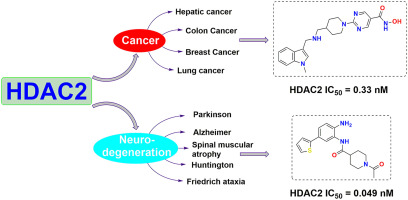What is HDAC2 Protein?
The HDAC2 (Histone Deacetylase 2) protein is one among the 18 known histone deacetylases, discovered in the late 1990s, that contribute to gene expression and cell cycle progression in multiple ways. Located in the gene locus 6q21 on chromosome 6, this nucleic protein is a crucial addition to the HDAC family of proteins.
Its gene locus is critically in the spotlight as it is a hotbed of genetic changes that trigger several types of cancers. Structurally, the HDAC2 protein exhibits a typical HDAC structure, characterized by a single catalytic domain at the N-terminus with a zinc-binding pocket inclusive of helices. It is a relatively large protein of about 488 amino acids and weighing approximately 55kDa.
Function of HDAC2 Protein
The HDAC2 protein, a part of a larger group of proteins known as the HDAC1/HDAC2 complex or NuRD complex, plays an indispensable role in epigenetic modifications of the DNA, controlling chatter between genes and their expression. It does so by removing acetyl groups from acetylated lysine located on the histone, thereby enabling the DNA to roll tightly around the histones. In simpler terms, the HDAC2 protein functions to 'silence' genes, suppressing their expression.
HDAC2 Protein-related Signal Pathway
Intricate signaling pathways control the operation of HDAC2 within cells. A primary signal pathway associated with the HDAC2 protein is the PI3K-Akt signaling pathway. Here, the PI3K-Akt pathway activates HDAC2, which then aids cell growth and survival, helping cells bypass apoptosis.
Though critical to normal cell functionality, this pathway's malfunction or overactivation can result in uncontrolled cell growth, triggering cancerous growth. HDAC2 also contributes to the Notch signaling pathway, which aids in cell differentiation, proliferation, and apoptosis.
HDAC2 Protein-related Diseases
HDAC2's role in gene silencing implicates it in a broad spectrum of diseases. Some studies hint at a direct correlation between increased HDAC2 levels and various cancer forms, indicating the protein's role in malignancies such as lung, colorectal, and gastric cancers.
HDAC2 is also implicated in neurodegenerative diseases like Alzheimer's. Findings suggest an overexpression of HDAC2 in the brains of Alzheimer's patients, indicating a probable link between HDAC2 protein activity and neuron damage.

HDAC2 Protein's Applications in Biomedical
Amidst the potential adversities HDAC2 could cause, it presents promising therapeutic applications. The understanding of the HDAC2 protein's role in cancer progression has opened doors to novel cancer remedies revolving around HDAC inhibitors, promising better efficacy and less toxicity than traditional therapies. HDAC2 inhibitory drugs such as vorinostat and romidepsin are in clinical use, marking a new era of cancer therapeutics.
In neurology, exploring the role of HDAC2 in cognitive impairments and synaptic plasticity associated with Alzheimer's disease paves the way for potential remedies. Experimental drugs that can reduce HDAC2 expression and restore memory and learning abilities are under investigation.
In summary, the HDAC2 protein, while serving critical roles in cellular functionality, also plays vital roles in disease development ranging from cancer to neurodegenerative disorders. Its understanding allows the scientific community to devise therapeutic solutions built around deacetylase inhibitors, marking a significant advancement in targeted disease interventions.
Our Featured Products
| Cat.No. | Product Name | Species | Source (Host) | Tag |
|---|---|---|---|---|
| HDAC2-393H | Active Recombinant Human HDAC2 protein, His-tagged | Human | Insect Cell | His |
| HDAC2-13706H | Recombinant Human HDAC2, GST-tagged | Human | E.coli | GST |
| HDAC2-28264TH | Recombinant Human HDAC2 | Human | Insect Cell | N/A |
| Hdac2-1621M | Recombinant Mouse Hdac2 Protein, His&GST-tagged | Mouse | E.coli | N-His&GST |
| HDAC2-4090M | Recombinant Mouse HDAC2 Protein, His (Fc)-Avi-tagged | Mouse | HEK293 | His (Fc)-Avi |
Reference
- Gediya, P., Parikh, P. K., Vyas, V. K., & Ghate, M. D. (2021). Histone deacetylase 2: A potential therapeutic target for cancer and neurodegenerative disorders. European Journal of Medicinal Chemistry, 216, 113332. https://doi.org/10.1016/j.ejmech.2021.113332

